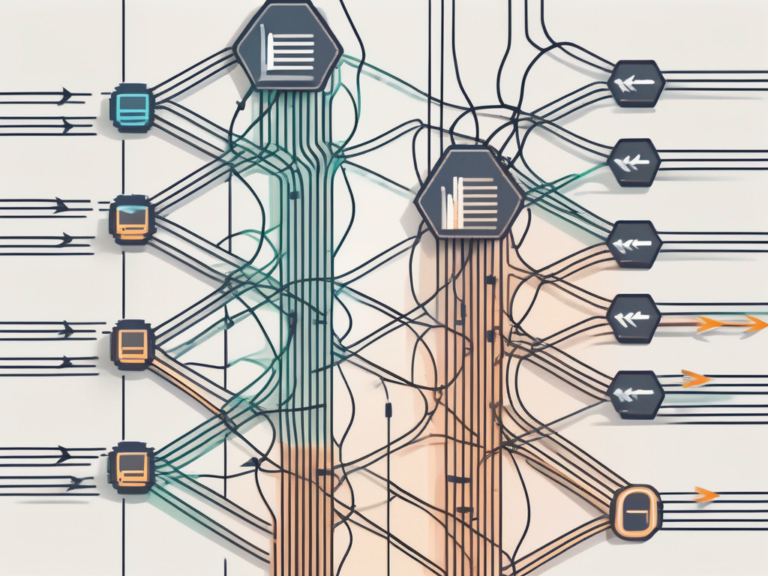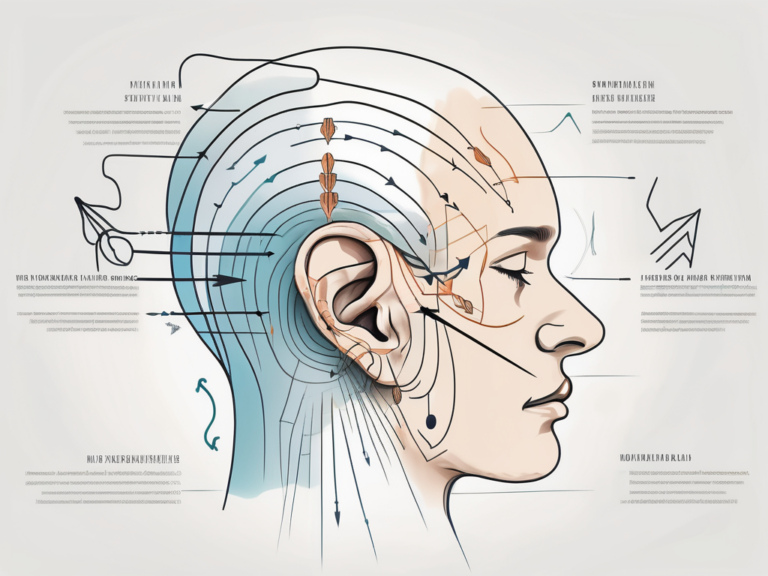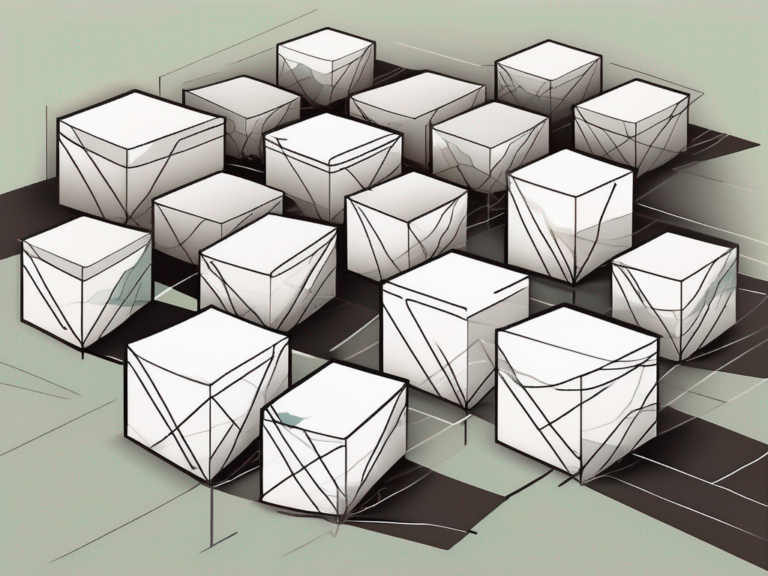The Role of the Oculo Motor Nerve in Eye Movement
The oculo motor nerve plays a crucial role in the complex mechanism of eye movement. Understanding the anatomy and functions of this nerve is essential to comprehend the impact it has on our ability to see and perceive the world around us. Furthermore, an understanding of the disorders associated with the oculo motor nerve and the potential for future research and advancements can provide insights into the advancements in diagnosis and treatment that may lie ahead.
Understanding the Oculo Motor Nerve
The oculo motor nerve, also known as cranial nerve III, is one of the twelve cranial nerves that emerge from the brainstem. The nerve originates from the midbrain and is responsible for the innervation of several important eye muscles, including the superior rectus, inferior rectus, medial rectus, and inferior oblique muscles. These muscles control eye movement and allow us to focus our gaze on objects of interest.
The oculo motor nerve contains both motor and parasympathetic fibers. The motor fibers control the movement of the eye muscles, while the parasympathetic fibers regulate the constriction of the pupil and the accommodation of the lens. It is the only cranial nerve that innervates both motor and parasympathetic functions.
Anatomy of the Oculo Motor Nerve
The oculo motor nerve arises from the oculomotor nucleus, which is located in the midbrain. From the nucleus, the nerve fibers exit the skull through the superior orbital fissure and enter the orbit. Once inside the orbit, the nerve branches out and innervates the respective eye muscles.
Additionally, the oculo motor nerve communicates with other cranial nerves, such as the trochlear and abducens nerves, to coordinate eye movements and ensure smooth and coordinated visual tracking.
Functions of the Oculo Motor Nerve
The primary function of the oculo motor nerve is to control the movements of the eye muscles, which allows us to direct our gaze in different directions. Each eye muscle innervated by the oculo motor nerve has a specific role in eye movement. The superior rectus muscle elevates the eye, the inferior rectus muscle depresses it, the medial rectus muscle adducts it towards the nose, and the inferior oblique muscle elevates and externally rotates the eye.
In addition to controlling eye movements, the oculo motor nerve also regulates the constriction of the pupil. When exposed to bright light, the parasympathetic fibers within the oculo motor nerve trigger the pupillary reflex, causing the pupil to constrict. This helps to regulate the amount of light entering the eye and ensures optimal visual acuity.
Moreover, the oculo motor nerve plays a crucial role in the accommodation of the lens. When we shift our focus from a distant object to a near one, the parasympathetic fibers within the oculo motor nerve stimulate the ciliary muscle, causing it to contract. This contraction leads to the relaxation of the suspensory ligament, allowing the lens to become more convex and increase its refractive power. As a result, we are able to see nearby objects clearly.
Furthermore, the oculo motor nerve is involved in the coordination of eye movements during reading. As we scan a line of text, the oculo motor nerve works in conjunction with other cranial nerves to ensure that our eyes move smoothly and accurately across the page. This coordination is essential for efficient reading and comprehension.
The Oculo Motor Nerve and Eye Movement
The mechanism of eye movement is a complex process that involves the coordination of multiple eye muscles and their respective innervation by the oculo motor nerve. Understanding this mechanism is essential to comprehend the interplay of the oculo motor nerve with other components of the visual system.
Mechanism of Eye Movement
Eye movement involves the coordinated contraction and relaxation of various eye muscles. When we want to shift our gaze to a different object or change the direction of our vision, the brain sends signals through the oculo motor nerve to the eye muscles involved in the desired movement. These signals prompt the muscles to contract or relax, resulting in the desired eye movement.
But have you ever wondered how these signals are generated and transmitted? It all starts in the brain, where the visual cortex processes the incoming visual information and determines the need for eye movement. Once the decision is made, the brain sends electrical signals through the oculo motor nerve, which acts as a communication pathway between the brain and the eye muscles.
These electrical signals travel at incredible speeds, reaching the targeted eye muscles almost instantaneously. Upon receiving the signals, the eye muscles respond by contracting or relaxing, depending on the specific movement required. This intricate dance of muscle contractions and relaxations allows us to effortlessly explore our visual environment.
Role of the Oculo Motor Nerve in Eye Movement
The oculo motor nerve plays a central role in eye movement by providing the necessary innervation for the eye muscles involved in this process. Without the proper functioning of the oculo motor nerve, our ability to direct our gaze and track moving objects would be severely impaired.
But how does the oculo motor nerve achieve such precise control over the eye muscles? It does so by branching out into different motor nuclei within the brainstem, each responsible for innervating specific eye muscles. This specialized innervation allows for the fine-tuning of eye movements, ensuring that each muscle contributes precisely to the desired movement.
Furthermore, the oculo motor nerve also interacts with other cranial nerves involved in eye movement, such as the trochlear and abducens nerves. This collaboration ensures the smooth coordination of eye movements, allowing us to effortlessly follow a moving object or shift our gaze from one point of interest to another.
So, the next time you effortlessly scan your surroundings or track a flying bird, remember the intricate interplay between the oculo motor nerve and the eye muscles. This remarkable mechanism enables us to navigate the visual world with precision and ease.
Disorders Related to the Oculo Motor Nerve
Despite its vital role in eye movement, the oculo motor nerve is susceptible to various disorders that can significantly impact vision and eye functioning. Recognizing the symptoms and understanding the diagnosis and treatment options for these disorders is crucial for effective management.
When the oculo motor nerve is affected, it can disrupt the delicate coordination of eye movements, leading to a range of symptoms. One common symptom is double vision, where the eyes fail to align properly, causing objects to appear as two overlapping images. This can make it challenging to navigate the world and perform tasks that require accurate depth perception.
In addition to double vision, individuals with oculo motor nerve disorders may experience ptosis, which is the drooping of the eyelid. This can not only affect one’s appearance but also obstruct the visual field, making it difficult to see clearly. Furthermore, the oculo motor nerve is responsible for controlling the movement of the eyes in different directions. When this nerve is compromised, individuals may struggle to move their eyes smoothly, resulting in jerky or limited eye movements.
Another symptom that can arise from oculo motor nerve disorders is strabismus, a condition characterized by the misalignment of the eyes. This misalignment can be constant or intermittent, causing one eye to deviate inward, outward, upward, or downward. Strabismus not only affects the aesthetics of the eyes but can also lead to amblyopia, commonly known as lazy eye, where the brain suppresses the visual input from the misaligned eye.
Moreover, individuals with oculo motor nerve disorders may experience visual disturbances, such as blurred vision or an inability to focus properly. These symptoms can have a substantial impact on daily activities, such as reading, driving, and general visual tasks. It can be frustrating and exhausting to constantly strain the eyes in an attempt to achieve clear vision.
Diagnosis and Treatment of Oculo Motor Nerve Disorders
Diagnosing oculo motor nerve disorders involves a comprehensive evaluation of the patient’s medical history, physical examination, and specialized tests. An ophthalmologist or a neurologist specializing in eye disorders may perform these assessments to determine the underlying cause of the symptoms and develop an appropriate treatment plan.
During the physical examination, the doctor may assess eye movements, evaluate the alignment of the eyes, and test visual acuity. Specialized tests, such as electrodiagnostic studies and imaging scans, may also be conducted to further investigate the condition.
Treatment options for oculo motor nerve disorders vary depending on the specific condition and its severity. Non-invasive approaches, such as visual exercises and prisms, can help alleviate symptoms and improve eye functioning in milder cases. Visual exercises aim to strengthen the eye muscles and improve coordination, while prisms can be used to redirect light and correct the alignment of the eyes.
In more severe cases, surgical intervention may be necessary to correct muscle imbalances or resolve underlying structural issues affecting the oculo motor nerve. Surgery can involve repositioning or tightening the eye muscles to restore proper alignment and improve eye movement. The decision to undergo surgery is typically made after careful consideration of the individual’s symptoms, overall health, and potential risks and benefits.
The Impact of Oculo Motor Nerve Damage
Oculo motor nerve damage can have both short-term and long-term effects on eye movement and visual perception. Understanding these effects can provide insights into the challenges faced by individuals with oculo motor nerve damage and the importance of timely diagnosis and treatment.
Short-Term Effects of Oculo Motor Nerve Damage
Immediately following oculo motor nerve damage, individuals may experience significant difficulties in controlling eye movements. This can lead to double vision, eye misalignment, and an inability to focus the eyes properly on objects of interest.
Imagine trying to read a book, only to see the words dancing and overlapping each other, making it nearly impossible to decipher the meaning. Or attempting to drive, but the road ahead appears fragmented and distorted, making it challenging to navigate safely. These short-term effects can be incredibly frustrating and disorienting, as individuals struggle to make sense of their visual surroundings.
Furthermore, the strain and effort required to compensate for the impaired eye movements can be exhausting. Simple tasks that were once effortless now become arduous endeavors, draining both physical and mental energy. The constant battle to regain control over one’s vision can leave individuals feeling fatigued and overwhelmed.
Long-Term Effects of Oculo Motor Nerve Damage
In the long term, oculo motor nerve damage can have a lasting impact on visual functioning. Individuals may develop compensatory strategies to cope with the impairments, such as head movements or relying more heavily on the unaffected eye.
Picture someone tilting their head to the side or turning their entire body to compensate for the misalignment of their eyes. While these adaptations may improve visual stability to some extent, they also come with limitations. The constant need for compensatory movements can lead to muscle strain and fatigue, further burdening the already compromised visual system.
Moreover, the effects of oculo motor nerve damage extend beyond eye movement. Accommodation, the ability of the eyes to adjust focus, may be impaired, making it difficult to shift attention between objects at varying distances. Pupillary reflex, the automatic adjustment of the pupil size in response to light, may also be affected, causing difficulties in adapting to different lighting conditions.
As a result, individuals with oculo motor nerve damage may experience reduced clarity in their vision, struggling to bring objects into sharp focus. Reading small print or seeing details in the distance becomes a challenge, affecting their ability to perform everyday tasks with ease.
By understanding the short-term and long-term effects of oculo motor nerve damage, we can appreciate the immense impact it has on individuals’ lives. Timely diagnosis and appropriate treatment are crucial in mitigating these effects and helping individuals regain control over their visual perception. With the right support and interventions, individuals with oculo motor nerve damage can overcome the challenges they face and lead fulfilling lives.
Future Research on the Oculo Motor Nerve
Despite significant advancements in our understanding of the oculo motor nerve, there is ongoing research aimed at further elucidating its complexities and exploring potential treatment options for associated disorders. The future of oculo motor nerve research holds promise for improved diagnosis, treatment, and overall vision outcomes.
Potential Advances in Oculo Motor Nerve Research
Researchers are investigating various aspects of the oculo motor nerve to uncover its intricate functions and potential mechanisms underlying disorders. Advancements in neuroimaging techniques, such as functional magnetic resonance imaging (fMRI), allow for non-invasive visualization of the oculo motor nerve and its connections, enabling a more precise understanding of its role in eye movement.
For example, recent studies have utilized fMRI to map the neural pathways involved in the oculo motor nerve’s control of eye movements. By analyzing the activation patterns of specific brain regions during various eye movement tasks, researchers have been able to identify distinct neural circuits responsible for different types of eye movements, such as saccades and smooth pursuit. This newfound knowledge provides a foundation for developing targeted interventions to improve oculo motor nerve function in individuals with movement disorders.
Additionally, molecular studies are focused on identifying the genes and proteins involved in the development and maintenance of the oculo motor nerve. This knowledge may pave the way for targeted therapies that could potentially restore or improve oculo motor nerve function in individuals with related disorders.
Recent breakthroughs in gene editing technologies, such as CRISPR-Cas9, offer exciting possibilities for correcting genetic mutations associated with oculo motor nerve disorders. By precisely modifying the DNA sequences responsible for faulty protein production, scientists hope to develop gene therapies that can effectively treat these conditions at their root cause.
The Future of Oculo Motor Nerve Treatment
As research progresses, the future of oculo motor nerve treatment holds promise for improved outcomes. Neurorehabilitation strategies, including ocular motor training and virtual reality-based therapies, show potential in enhancing eye movement coordination and functional recovery in individuals with oculo motor nerve disorders.
Virtual reality-based therapies, in particular, offer a unique and immersive approach to rehabilitate the oculo motor nerve. By creating realistic virtual environments that require precise eye movements, individuals can engage in targeted exercises that promote the retraining of their oculo motor system. This innovative approach not only enhances motor skills but also provides a more engaging and enjoyable rehabilitation experience.
Furthermore, advancements in surgical techniques, such as minimally invasive procedures and targeted muscle reinnervation, offer the prospect of more precise interventions with reduced risks and improved outcomes for individuals requiring surgical intervention for oculo motor nerve-related conditions.
Minimally invasive procedures, such as endoscopic surgery, utilize small incisions and specialized instruments to access and repair the oculo motor nerve with minimal disruption to surrounding tissues. This approach reduces post-operative pain, scarring, and recovery time, ultimately improving patient satisfaction and overall outcomes.
In addition, targeted muscle reinnervation, a surgical technique that involves rerouting nerves to innervate specific muscles, holds promise for individuals with severe oculo motor nerve damage. By redirecting healthy nerves to control the affected muscles, this procedure can restore functional movement and improve quality of life for those with debilitating oculo motor nerve disorders.
In conclusion, the future of oculo motor nerve research and treatment is filled with exciting possibilities. Advances in neuroimaging, molecular studies, neurorehabilitation strategies, and surgical techniques offer hope for improved understanding, targeted therapies, and enhanced outcomes for individuals with oculo motor nerve disorders. Continued research and collaboration among scientists, clinicians, and patients will be crucial in unlocking the full potential of the oculo motor nerve and improving the lives of those affected by its dysfunction.
Conclusion
The oculo motor nerve plays a central role in eye movement and visual perception. Understanding its anatomy, functions, associated disorders, and the potential for future research is essential for both healthcare professionals and individuals affected by oculo motor nerve-related conditions.
Advancements in diagnosis, treatment, and rehabilitation strategies offer hope for improved outcomes and enhanced quality of life for those facing challenges related to the oculo motor nerve. Continued research and collaboration within the field will undoubtedly drive progress and shape the future of oculo motor nerve-related care.






